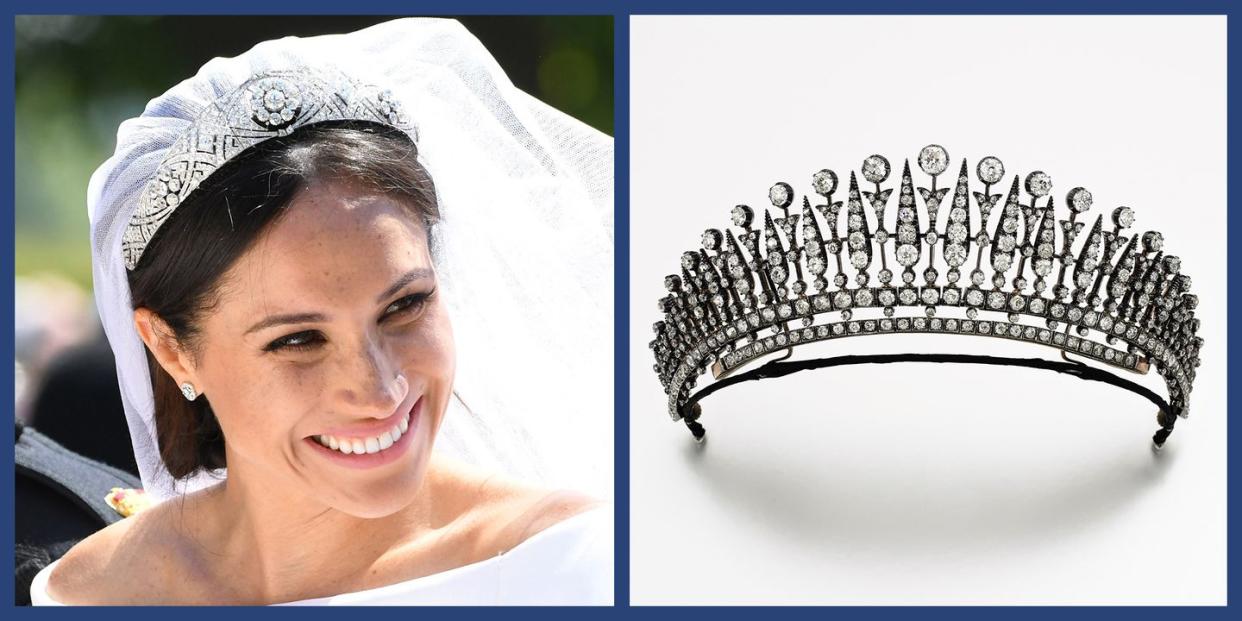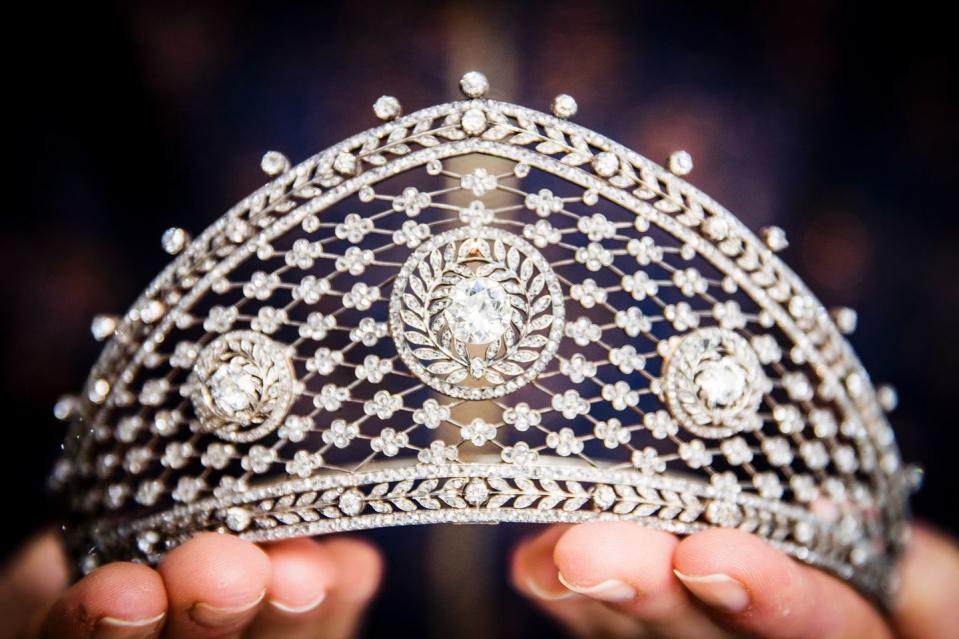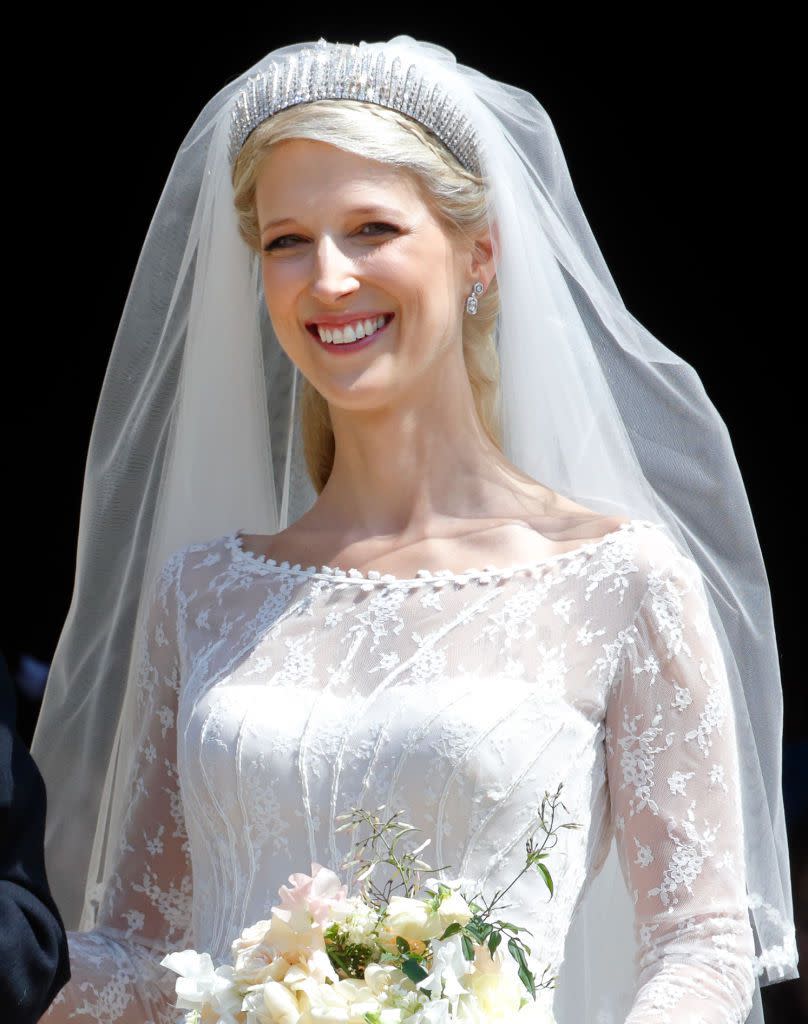Who Buys Tiaras These Days Anyway? (Very Rich Brides—And Not of the Royal Variety)

Last week, just days before the latest royal wedding (the third in a year), two tiaras were sold in Geneva. One, an intricately crafted, all-diamond Fabergé that Duchess Cecilie of Mecklenburg-Schwerin received on the occasion of her 1905 marriage to Wilhelm von Hohenzollem, the heir to the Prussian throne, fetched $433,687 at Sotheby's.
Another, an historic aquamarine and diamond Fabergé tiara Princess Alexandra of Hanover and Cumberland received on the occasion of her 1904 marriage to Frederick Francis IV, Grand Duke of Mecklenburg-Schwerin, sold for $1.35 million at Christie's.
So who's buying tiaras in 2019?

There is, says Daniela Mascetti, Chairman of Sotheby's Jewelry, Europe, "a renewed interest in tiaras among today’s jewelry collectors. A few decades ago, tiaras were bought at auction and often dismantled–valued more for their component diamonds than for the jewel itself."
Nowadays, Mascetti says, "more and more people are interested in the design and craftsmanship which goes into period pieces, and of course tiaras with prestigious provenance are often the best examples of their kind, as they were made for members of royal families or the aristocracy. Really exceptional examples are likely to be of interest to collectors or institutions who view them as works of art."
Once acquired, are these pieces actually ever worn? "Important tiaras from the great houses, or those with noble provenance, are still highly sought after by private collectors and museums," says her American colleague Frank Everett. "Often they are never worn."

So who does wear a tiara these days? "We have noticed increasing interest from Asia, where tiaras are in fashion, particularly for weddings," says Mascetti.
Everett has also noticed the trend. "Tiaras continue to be popular with brides everywhere in the world, but especially in Asia and the Middle East. So bridal jewelry, first and foremost, is what is driving the modern tiara market," he explains.
In the last five years Sotheby's has sold several tiaras, including one from the Bourbon Parma family last year that fetched $975,000. The diamonds in that tiara were originally set in the plaque of the order of the Saint-Esprit of Charles X, King of France. The three largest motifs detach and become brooches, which of course makes a tiara infinitely more useful.
Versatility seems to be a key motivator for the modern tiara market. "We most often sell tiaras that can be converted into other types of jewelry, like bracelets or necklaces," says Russell Zelentz of New York's Stephen Russell Jewelry. When was the last time someone actually walked in the store asking to see a tiara?
"We do still sell and get requests for tiaras," he says, "The interest in mostly for the bandeau style (think Meghan Markle's wedding tiara) as opposed to more crown like styles, (think the Vladimir tiara or Camilla's beloved Boucheron Honeycomb tiara) but we do sell the crowns too. They are more popular in Asia, sometimes for weddings and sometimes just for evening wear."

And how to achieve tiara status without actually owning one? Frank Everett has ideas.
"Vintage diamond brooches are finally gaining more popularity as hair ornaments as well-I’ve been trying for years!" he says. "I love the idea of creating your own 'tiara' from a deco strap bracelet or brooch held in place by velvet or grosgrain ribbon."
You might also simply admire the art of the tiara when the Devonshire Diamond Tiara comes to New York for the “Treasures from Chatsworth” exhibition at Sotheby's (June 28- September 18).
And your next opportunity to own one? June 10, when Sotheby's London puts up a 1966 Charles de Temple (he was the 1960s British jeweler that created the gold finger in Goldfinger) for sale with an estimate of $10,450 to $15,676. Summer wedding?

('You Might Also Like',)

